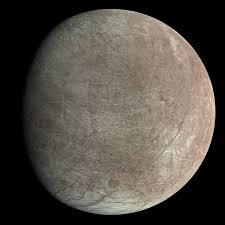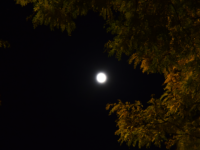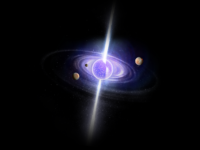It was a simple question, asked offhandedly over a casual meal, but it has spurred decades of research far beyond the confines of our Earth. In 1950, physicists Enrico Fermi, Edward Teller, Emil Konopinski, and Herbert York shared a meal and let their imaginations run wild. The conversation dipped into topics like aliens, flying saucers, and traveling at the speed of light before most of the scientists moved on, but Enrico Fermi was still stuck on a single question, “Where is everybody?”
This question is the basis of Fermi’s paradox: the contradiction between the high likelihood of the formation of intelligent life and the lack of evidence for its existence outside of our planet. The puzzle of Earth’s apparent singularity in sustaining life in an ever–expanding universe is one that has fueled our collective imaginations, and numerous hypotheses have been proposed to explain our solitude. Some posit that the formation of intelligent life is rarer than we think, others argue that we just haven’t figured out the technology to communicate yet. While another theory takes an even darker approach. The dark forest theory, based on the premise outlined in the novel The Dark Forest by Liu Cixin, argues that since all life desires to stay alive and there is no way to know before contact if a civilization is hostile or not, the best course of action is to remain silent. And so, the universe is a dark forest through which intelligent civilizations move in silence, knowing that if they were to ever encounter another, their only option would be to eliminate them.
While astrobiologists are taking a more logical approach to the search for life, it doesn’t mean they lack imagination. By working backwards from our existence to the Big Bang, scientists have developed a relatively simple formula of the necessary materials for sustaining life: a source of raw material for organisms to synthesize necessary molecules, a source of energy for repair and reproduction, and temperatures at which liquid water can exist. Searching the entire known universe is a herculean task. No spacecraft has even managed to travel to any neighboring stars, so astronomers decided to start searching for life closer to home with our own Solar System. Mars has long held the spotlight, with more spacecraft on its surface and in its atmosphere than any other planets besides Earth. But now, the search has extended past the planets to include the moons that orbit them.
One such moon is Europa, an icy mass that orbits Jupiter. It was discovered by astronomer Galileo Galilei in 1610, but it was the aptly named Galileo spacecraft mission in the late 1990s that finally turned astrobiologists’ attention to this enigmatic moon. As the Galileo spacecraft explored Jupiter’s neighborhood, the data it sent back to Earth showed that Europa was most likely an ocean world with a thick, icy surface. This presence of water immediately highlighted the potential for life to develop on Europa and the race was on to confirm Galileo’s findings and learn more about what was lurking under the surface of the icy moon.
“Mars has long held the spotlight, with more spacecraft on its surface and in its atmosphere than any other planets besides Earth. But now, the search has extended past the planets to include the moons that orbit them.”
Over thirty years later, on October 14, 2024, NASA’s Europa Clipper launched from Kennedy Space Center in Florida and began what will be a five–and–a–half–year journey to Jupiter where it will fly by Europa over the course of four years, collecting valuable magnetic, radar, and tidal data to determine the presence, depth and salinity of an ocean interior. Initial data from Clipper’s first fly–by won’t be available until the early 2030s, but it has the potential to reveal how tides created by Jupiter’s gravity and heat flowing from the core of the moon could develop enough energy beneath the icy surface to create a life–sustaining environment.
The complex array of data collected could hold the key to the simple question uttered by Fermi over half a century ago. It is a question that, on the surface, might seem simple and scientific, but it reveals our human nature to hope we really aren’t all alone.






